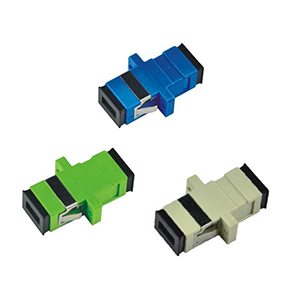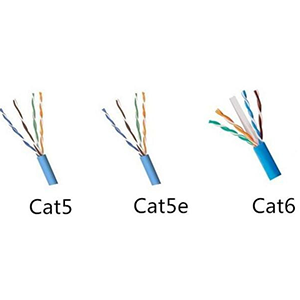Fiber optic networks play a key role in modern communications. This article will explore passive optical networks (PON) and their advantages. We will first define the basic network structure of PON and explain how it is different from traditional fiber optic networks. Next, we will introduce the main components of PON, including optical network terminals (ONTs), optical line terminals (OLTs), and optical splitters.
Then, we will analyze the main advantages of PON in depth, including cost-effectiveness, energy consumption optimization, deployment and expansion flexibility, reliability and security, and bandwidth advantages. We will explain how these advantages promote the widespread use of PON in practical applications. Finally, we will analyze the unique advantages of PON in different scenarios such as home broadband, enterprise campuses, and 5G.
What is Passive Optical Network (PON)
Let me introduce you to the relevant concepts of Passive Optical Network (PON):
Basic network structure of PON:
PON is a fiber access network structure based on passive optical splitters. Its main components include:
- Optical Line Terminal (OLT): optical terminal equipment located in the central office
- Passive optical splitter: distributes optical signals from OLT to multiple users
- Optical Network Unit (ONU): optical access equipment located on the user side
OLT transmits signals to the splitter via optical fiber, and the splitter distributes the signals to different ONUs. This tree-like topology avoids the need for active repeaters and simplifies the network structure.
Differences between PON and traditional fiber optic networks:
Compared with traditional point-to-point fiber optic networks, PON networks have the following main differences:
- Network topology: PON adopts a tree-like passive branching network topology instead of a point-to-point structure
- Network equipment: PON uses passive optical splitters instead of active relay equipment
- Network deployment: PON can realize the deployment of fiber to the home (FTTH) with a wider coverage
- System cost: PON’s passive topology and centralized equipment structure reduce network deployment and maintenance costs
In short, PON uses passive optical splitters to realize the sharing and reuse of fiber optic networks, with the advantages of flexible deployment and low cost, and is one of the main technical solutions for modern fiber optic access networks.
Main components of PON
Let me introduce the main components of PON network in detail:
Optical Network Unit (ONU):
ONU is an optical access device located on the user side, and its main functions include:
- Photoelectric conversion: convert optical signals into electrical signals and connect user devices
- Service processing: provide voice, video, data and other service processing functions
- Management and control: realize communication and service management with OLT
ONU is the terminal device of PON network, responsible for converting optical signals into electrical signals available to users.
Optical Line Terminal (OLT):
OLT is located in the central office and is the head-end device of the PON network. Its main functions include:
- Photoelectric conversion: convert electrical signals into optical signals and send downstream data to users
- Signal processing: process and aggregate upstream user data
- Service management: realize service management and control of subordinate ONUs
OLT is the central device of the PON network, responsible for sending downstream data to users and aggregating upstream user data.
Passive optical splitter:
Passive optical splitter is a key component of PON network, and its main functions include:
- Signal distribution: distribute the downstream optical signal sent by OLT to multiple ONUs
- Signal aggregation: aggregate the upstream optical signals of multiple ONUs to OLT
Passive optical splitter uses the principle of optical splitter coupling to realize the distribution and aggregation of optical signals in PON network, which greatly simplifies the network structure. In short, ONU, OLT and passive optical splitter together constitute the basic architecture of PON network, play their own important functions, and realize the efficient deployment of optical fiber access network.
Main advantages of PON
Let me introduce you to the main advantages of PON network in detail:
Cost-effectiveness:
- PON adopts passive splitter structure and does not require active relay equipment
- This greatly reduces the construction and maintenance costs of the network
- The cost advantage of PON is the key factor promoting its widespread application
< h3>Energy consumption optimization:
- PON network topology adopts passive structure and does not require power supply
- This makes PON network energy consumption significantly lower than traditional optical network
- Low energy consumption is crucial for green environmental protection and power resource management
Easy to deploy and expand:
- PON tree topology wiring is flexible and easy to lay step by step
- It can be based on the user ONU access points can be added at any time according to user needs
- This rapid expansion performance meets the ever-changing needs of users
Reliability and security:
- PON passive splitter structure, strong anti-interference
- Centralized OLT centralizes network management and improves security
- Reliability and security are key network performance indicators
Bandwidth advantage:
- PON is based on optical fiber transmission and has abundant bandwidth resources of tens of Gbps
- A single optical fiber can serve multiple users at the same time, and the bandwidth is fully utilized
- Massive bandwidth is conducive to meeting the future user’s demand for high bandwidth
In general, the cost-effectiveness, energy consumption advantages, easy deployment, reliability and abundant bandwidth resources of PON networks are important reasons for their widespread application. These characteristics make PON one of the leading technical solutions for modern fiber-optic access networks.
Advantages of PON in different application scenarios
Let me analyze the advantages of PON in different application scenarios for you:
Home broadband application:
- PON can provide ultra-high bandwidth up to 1Gbps
- Low cost and easy to deploy, suitable for large-scale home users
- Centrally managed OLT can ensure network security for home users
Enterprise park applications:
- PON supports multi-service integration and can provide voice, data, video and other services
- The passive topology structure facilitates flexible wiring within the park
- Centralized management capabilities are conducive to the unified management and control of enterprise networks
5G network applications:
- PON can be used as an important bearer technology for 5G fronthaul networks
- Its abundant bandwidth resources can meet the needs of 5G High-speed requirements for base stations
- Passive topology facilitates rapid deployment and expansion of 5G networks
Industrial IoT applications:
- PON can provide highly reliable fiber connections, suitable for industrial environments
- Distributed ONUs can access industrial equipment nearby, reducing deployment costs
- Centralized management facilitates unified operation and maintenance of the Industrial IoT
Government/Education Network application:
- PON’s high bandwidth and low cost are suitable for these application scenarios
- Its flexible deployment method facilitates the gradual coverage and expansion of the network
- Centralized management ensures network security and service quality
In general, PON has shown unique advantages in multiple application scenarios such as home broadband, enterprise campus, 5G, etc. with its high bandwidth, low cost, and easy deployment. It is the mainstream choice for current fiber-optic access networks.
Summary
As an innovative fiber-optic network architecture, PON has significant advantages in achieving cost-effectiveness, energy consumption optimization, and reliability assurance. Our company has long focused on the research and development and production of optical communication equipment and its core technologies, and has accumulated rich experience in PON applications. We provide high-performance PON equipment products to meet your needs in different application scenarios such as home broadband access, enterprise campus networks, and 5G bearer.
Our engineering team will provide you with professional system design, equipment selection, installation and debugging, and other full-range support to ensure the success and optimization of PON network deployment. At the same time, we can also provide technical services such as network operation and maintenance and fault diagnosis to help you give full play to the performance advantages of PON network. Contact us now to learn more.
Passive Optical Networking FAQ
Passive Optical Networking is a fiber-optic communication technology that uses a point-to-multipoint architecture to deliver broadband services to end-users without the need for active electronic components in the distribution network.
In a PON, a single optical fiber from the service provider’s central office is split using passive optical splitters to serve multiple end-user premises, reducing the amount of fiber and active equipment required.
The key components of a PON include the Optical Line Terminal (OLT) at the service provider’s central office, the Optical Network Unit (ONU) at the customer premises, and the passive optical splitters in the distribution network.
The most widely adopted PON standards include GPON (Gigabit-capable Passive Optical Network), XG-PON (10 Gigabit-capable PON), and NG-PON2 (Next-Generation PON 2), each offering different data rates and capabilities.
The key advantages of PON include reduced infrastructure costs, lower power consumption, simplified network management, and the ability to deliver high-bandwidth services to end-users.
PON is primarily used for fiber-to-the-home (FTTH), fiber-to-the-business (FTTB), and fiber-to-the-curb (FTTC) deployments, providing high-speed internet, video, and voice services to residential and commercial customers.
PON can be integrated with various access technologies, such as Wi-Fi and 5G, to provide seamless connectivity and enhanced service offerings to end-users.
Challenges may include the need for specialized equipment and expertise, ensuring network reliability, and managing the transition from legacy copper-based networks to fiber-optic infrastructure.
PON networks require monitoring, troubleshooting, and maintenance of the passive components, as well as coordination between the service provider and end-users for installation and service provisioning.
Ongoing advancements include the development of higher-speed PON technologies, the integration of PON with 5G and IoT networks, and the adoption of software-defined networking (SDN) and network function virtualization (NFV) in PON deployments.



